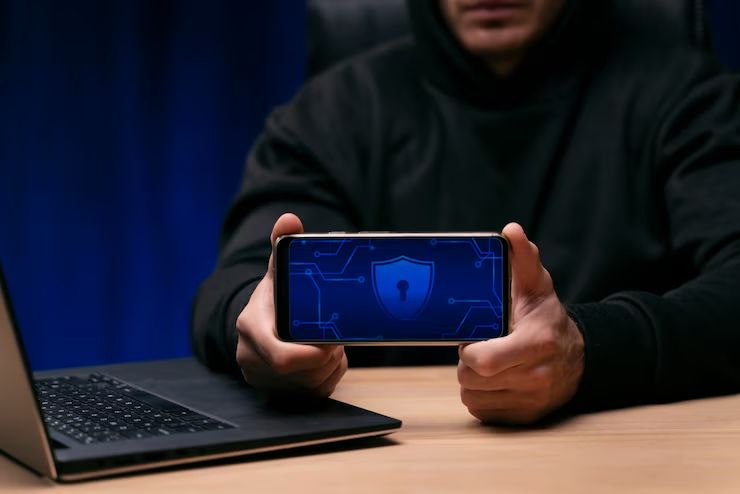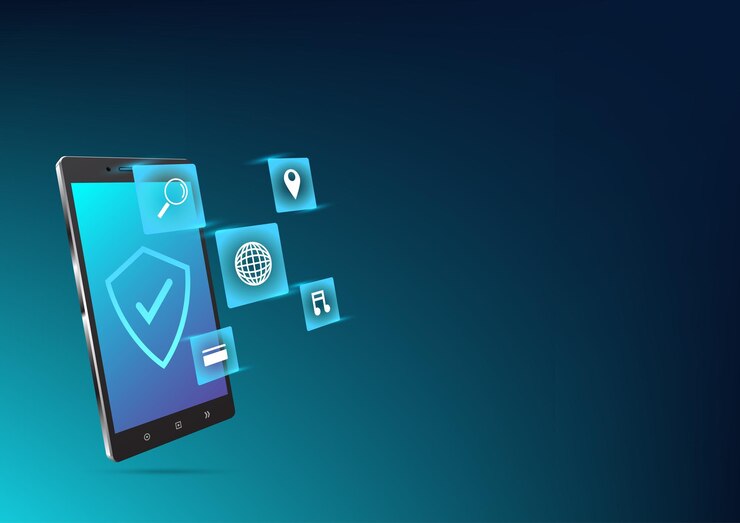Introduction
In a world where smartphones have become digital extensions of ourselves mobile security is more important than ever.Mobile Security to Keep Your Personal Data Safe in 2025. From online banking to social networking our daily lives revolve around these powerful devices. As we move into 2025 cyber threats are becoming more sophisticated and our mobile devices are prime targets for hackers and data thieves
This comprehensive guide covers essential mobile security practices that can help protect your personal data and keep your digital life safe in 2025
Mobile Security Matters in 2025
Mobile devices store an immense amount of personal and sensitive information. This includes
Contacts and messages
Emails and passwords
Banking credentials
Photos videos and documents
Health and fitness data
Social media accounts
A compromised device can give hackers full access to your identity finances and private conversations. Unfortunately many users underestimate mobile threats and fail to take the necessary precautions. Mobile security is no longer optional its a necessity.
Use a Strong Lock Screen and Biometric Protection

The first and simplest line of defense is your lock screen. This is your phones barrier against unauthorized access.
Best practices
Set a strong alphanumeric passcode instead of a simple 4-digit PIN.
Enable biometric authentication (fingerprint or facial recognition).
Use auto lock settings to lock your screen after 30 seconds of inactivity.
In 2025 facial recognition and fingerprint scanning are faster and more accurate than ever—use them to your advantage.
Keep Your Device Software Up to Date
One of the most overlooked security practices is updating your device regularly. Every update released by your manufacturer or operating system provider includes important security patches that address known vulnerabilities
Why it matters
Outdated operating systems are more vulnerable to malware and hacking
Hackers often exploit known flaws that are already patched in newer versions
App updates also contain security fixes and improved protections
Tip: Enable automatic updates for your OS and all installed apps to stay protected without the hassle.
Install a Reputable Mobile Security App
A good mobile security app provides an additional layer of defense Many apps today offer real-time scanning, phishing protection and theft prevention.
Features to look for
Malware scanning
Anti-phishing tools
Wi-Fi security checks
App permission control
VPN services
Lost phone location tracking
Recommended options in 2025: Bitdefender Mobile Security, Norton Mobile, Avast, and Kaspersky are highly rated.
Avoid unknown or free apps with limited reviews—they often carry risks of their own.
Control App Permissions

Many apps request access to data they dont need. For example why should a flashlight app need your location or contact list?
What to do:
Go to Settings Privacy Permissions and audit each app.
Deny access to anything unnecessary.
Revoke permissions for unused apps or delete them entirely.
By minimizing data exposure you reduce the potential damage in case of a data breach.
Avoid Public Wi-Fi or Use a VPN
Public Wi-Fi networks, such as those found in cafes airports or hotels are a hotspot for hackers. They can intercept your connection and steal passwords banking details or messages.
Solutions
Avoid entering sensitive information while on public Wi-Fi.
Use a trusted VPN Virtual Private Network to encrypt your internet activity.
Consider using mobile data instead—it’s often more secure.
Top VPNs for 2025 ExpressVPN NordVPN and Surfshark continue to lead the market in speed and security
Watch for Phishing and Social Engineering
Phishing is a technique used by cybercriminals to trick users into revealing personal information through fake emails messages or websites.
Common examples
SMS messages pretending to be from your bank.
Emails with fake account login pages.
Phone calls claiming to be from tech support.
Avoid these threats by
Never clicking suspicious links.
Double checking sender addresses.
Using security apps that detect phishing attempts.
Verifying requests directly with the source.
Only Download Apps from Official App Stores
While sideloading apps from unknown sources may offer early access or premium features it comes with serious risks.
Why stick to official stores
Google Play and Apple App Store review apps before approval.
They scan for malware and suspicious behavior.
They provide user reviews and security warnings.
Avoid: APK downloads from third-party sites, jailbreaking, or rooting your phone—these actions weaken your phone’s built-in security.
Enable Two Factor Authentication
Even if your password is compromised, 2FA provides an extra layer of security by requiring a second verification method usually a one-time code sent to your device
Where to use 2FA
Google Apple and Microsoft accounts
Banking and financial apps
Email and social media platforms
Cloud storage (Google Drive Dropbox etc.)
For even better protection use authentication apps like Google Authenticator or Authy instead of SMS codes.
Use a Secure Password Manager
Memorizing complex passwords for every account is impractical. A password manager securely stores your credentials and generates strong passwords when needed.
Benefits
Generates unique, strong passwords
Stores all credentials in one secure place
Auto-fills login fields for convenience
Syncs across devices
Popular password managers in 2025 Dashlane 1Password Bitwarden and LastPass.
Avoid saving passwords in your browser it’s less secure and can be accessed by malware.
Regularly Back Up Your Device
If your device is ever lost stolen or infected with ransomware having a backup ensures that you dont lose critical data.
Backup options
Cloud backups Use iCloud (iOS) or Google Drive (Android).
Local backups: Backup your data to a PC or encrypted external drive.
Scheduled backups: Set it to back up automatically every week or month.
In the worst-case scenario, you’ll be glad you did.
Set Up Remote Tracking and Wipe Features
If your device is lost or stolen, tools like Find My iPhone (Apple) or Find My Device (Android) allow you to
Track your phone’s location
Lock it remotely
Erase all data to prevent misuse
Enable these features in advance under Settings > Security or Device Management.
Clean Up Your Device Regularly
Old apps, junk files, and outdated data can become vulnerabilities.
Cleanup checklist:
Uninstall unused apps
Clear app cache and browser history
Disable background access for apps that don’t need it
Review privacy settings and permissions quarterly
Maintaining a lean and secure phone is key to long-term protection.
Educate Yourself and Stay Updated
Cyber threats evolve daily. Educate yourself about the latest trends in mobile security through:
Technology blogs like Phonifyo
Security alerts from your device manufacturer
Official news from cybersecurity companies
Knowledge is your most powerful weapon against cybercrime.
Conclusion
As our dependence on mobile devices grows so does the risk of digital threats. But the good news is you dont need to be a tech expert to protect yourself. By applying these essential mobile security practices you can safeguard your personal data, privacy, and peace of mind in 2025 and beyond.
Treat your phone like your digital identity—because in many ways, it is. Make security a habit not an afterthought.



